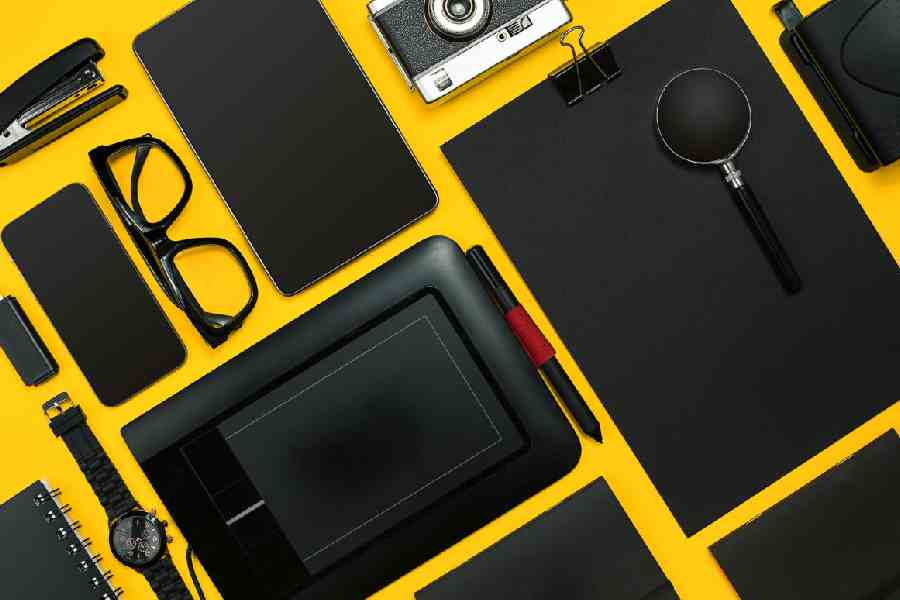When Apple unveiled the Vision Pro virtual reality goggles last year at a technology conference, many in the audience gasped at the price: $3,500. That’s more than quadruple the cost of a new iPhone and 14 times the cost of a competing headset from Meta.
The headset — Apple has marketed it as a computer, movie player, gaming machine — has arrived. And many have wondered why people would pay so much to do what they could already do with their computers, TVs and game consoles.
Yet the true cost of owning the Vision Pro is probably even higher. Try $4,600. That’s because the price shoots up with the add-ons and accessories many would want to buy, including:
n Apple’s $200 carrying case to protect the Vision Pro
n A pair of earphones, such as Apple’s $180 AirPods, to listen to music privately
n A spare $200 battery pack to get more use from the headset (with only two hours of battery life, the headset won’t last long enough to play a feature-length movie)
n $100 prescription lens inserts for those with glasses
n A spare $200 cushion to make the goggles fit another member of the family
n $200 for the larger data storage option (512GB instead of the 256GB on the base model) to hold more videos and apps.
Other options, including Apple’s $500 extended warranty coverage, a $70 video game controller and a very uncool $50 battery holder to clip onto your pants, could drive the price well above $5,000 — before tax.
We can all learn a lesson from the Vision Pro about “phantom costs”, the add-ons that significantly inflate the amount we spend.
A clear grasp of the true cost of tech ownership is crucial for anyone trying to stay in control of their budget, said Ramit Sethi, a personal finance adviser.
“Companies count on you not being able to run the maths,” said Sethi, who hosts a podcast on money psychology. “The bigger the purchase, the more money you invisibly spend.”
A run through the phantom costs of a Windows computer and a Samsung phone:
Windows computer
Microsoft sells its Surface Laptop 5 at a starting retail price of $1,000. But after some extras are added in the Microsoft Store, it’s more realistically a $1,950 laptop — nearly double the sticker price. The extras include:
n $500 for more memory
n Earphones, such as Microsoft’s $250 headphones
n An additional $200 for the dock that charges the laptop and connects it to an external display.
Here, the biggest phantom cost is memory, which is important for helping the computer smoothly run multiple apps at the same time. Typically, computer makers sell their base models with a modest amount of memory that isn’t likely to be enough to keep the computer running fast for many years.
The $1,000 base model of the Surface Laptop 5 comes with only 8GB of memory, but most people are likely to need double that. The model that includes 16GB costs an extra $500.
Samsung phone
Samsung’s new high-end smartphone, the Galaxy S24 Ultra, has a starting price of $1,300. But it’s more realistically a $1,540 phone.
In the last five years, many smartphone makers stopped shipping phones with basic accessories such as earphones and charging bricks, a shift that increased their profit margins. Also, the base model typically includes a modest data storage.
An average photo takes up 5MB, according to Samsung. So shooting 3,000 photos would take up roughly 15GB. Popular mobile games such as Fortnite and Final Fantasy VII: Ever Crisis gobble up dozens of gigabytes. Data storage can run out fast, so why get 256GB when you could spend about $100 more for double that?
Unless you already own accessories to work with your new phone, you’ll have to tack on these extras:
n $30 for the Samsung charging brick
n $40 for a Samsung protective case
n $50 for the Samsung wireless earbuds
n $120 to get 512GB to hold more photos and apps.
That’s not including the cost of using the phone with a modest wireless phone plan. With wireless service included, the cost of owning this Samsung phone over three years is about $112.77 a month, or $4,060 total.
Bottom line
The point is not to shame people about buying tech, but to raise awareness of what we’re actually spending on new gadgets, which is a lot more than we think, Sethi said. That’s why the best practice for most
people buying tech products is to hold on to them for as long as they can. This way they maximise the value they get not just from the devices but from the many extras they bought for them along the way.
NYTNS











